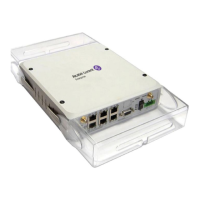Security
7705 SAR OS System Management Guide 49
The following displays an example of the user profile command usage.
Example: config>system>security# profile ghost
config>system>security>profile$ default-action permit-
all
config>system>security>profile# entry 1
config>system>security>profile>entry$ action permit
config>system>security>profile>entry# match "configure"
config>system>security>profile>entry# exit
config>system>security>profile# entry 2
config>system>security>profile>entry$ match "show"
config>system>security>profile>entry# exit
config>system>security>profile# entry 3
config>system>security>profile>entry$ match "exit"
The following example displays the user profile output:
ALU-1>config>system>security# info
----------------------------------------------
...
profile "ghost"
default-action permit-all
entry 1
match "configure"
action permit
exit
entry 2
match "show"
exit
entry 3
match "exit"
exit
...
----------------------------------------------
ALU-1>config>system>security#
Configuring Users
Access parameters are configured for individual users. For each user, the login name and,
optionally, information that identifies the user is defined. Use the following CLI commands
to configure access parameters for users:
CLI Syntax: config>system>security
user-template template-name
user user-name
access [ftp] [snmp] [console]
console
cannot-change-password
login-exec url-prefix:source-url

